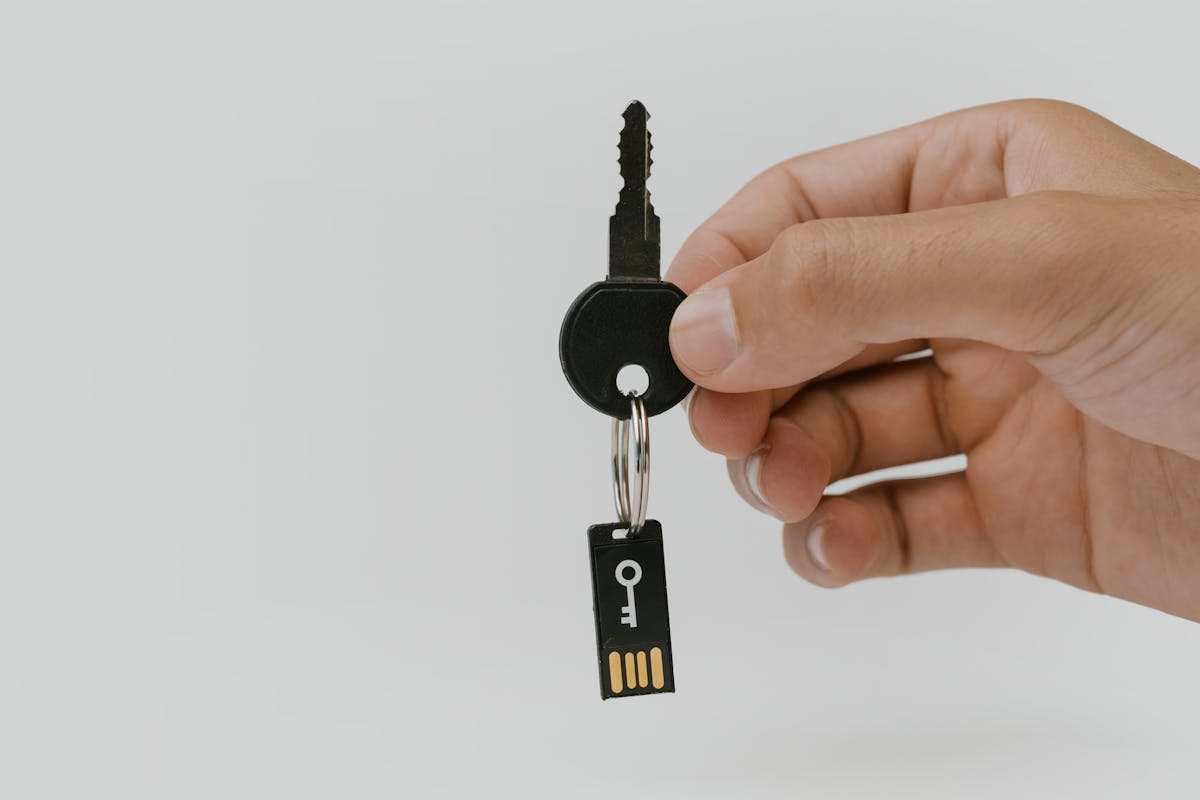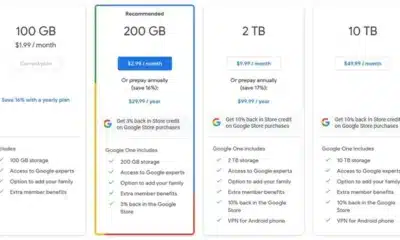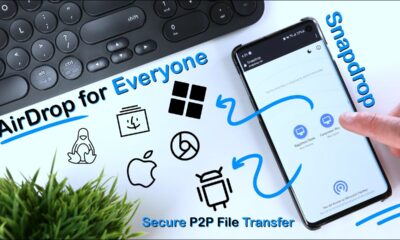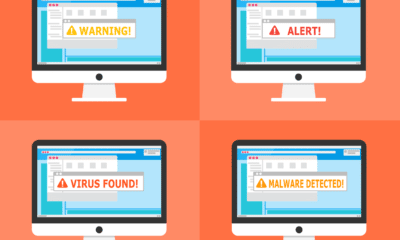Development and Hacking
Emerging Technologies In Cyber Security: Full Guide In 2025

In today’s rapidly evolving digital landscape, the importance of cybersecurity cannot be overstated. As cyber threats grow in sophistication and scale, organizations and individuals alike must stay ahead of the curve by leveraging emerging technologies in cyber security. These cutting-edge solutions are designed to address the ever-changing threat landscape, offering innovative ways to protect sensitive data, secure networks, and mitigate risks.
This guide explores six of the best emerging technologies in cybe rsecurity, detailing why they are revolutionizing the field and how they can help organizations stay resilient against cyberattacks.
1. Artificial Intelligence (AI) and Machine Learning (ML)
AI and ML are at the forefront of emerging technologies in cyber security. These technologies enable systems to analyze vast amounts of data, identify patterns, and detect anomalies in real-time. AI-powered tools can predict potential threats, automate responses, and even adapt to new attack vectors without human intervention.
Why it’s so good
- Proactive Threat Detection: AI can identify zero-day vulnerabilities and unknown threats by analyzing behavioral patterns. For example, AI algorithms can detect unusual login attempts or data transfers that deviate from normal user behavior, flagging them as potential threats before they escalate.
- Automation: Reduces the burden on cybersecurity teams by automating repetitive tasks like malware analysis and incident response. This allows security professionals to focus on more strategic initiatives, such as threat hunting and vulnerability management.
- Scalability: AI systems can handle massive datasets, making them ideal for large organizations with complex networks. Whether it’s monitoring millions of endpoints or analyzing terabytes of log data, AI can scale effortlessly to meet the demands of modern enterprises.
Moreover, AI and ML are continuously learning from new data, meaning their ability to detect and respond to threats improves over time. This adaptability is crucial in an environment where cybercriminals are constantly developing new tactics.

2. Zero Trust Architecture (ZTA)
Zero Trust is a security model that operates on the principle of “never trust, always verify.” Unlike traditional perimeter-based security, ZTA assumes that threats can exist both inside and outside the network. It requires continuous verification of user identities and device integrity before granting access to resources.
Why it’s so good
- Enhanced Security Posture: Minimizes the risk of insider threats and lateral movement within networks. By segmenting the network and enforcing strict access controls, ZTA ensures that even if an attacker gains access to one part of the system, they cannot easily move to other areas.
- Granular Access Control: Ensures users only have access to the resources they need, reducing the attack surface. For example, an employee in the marketing department would not have access to sensitive financial data, limiting the potential damage from a compromised account.
- Adaptability: Works seamlessly with cloud environments and remote work setups, which are increasingly common. As organizations adopt hybrid work models and migrate to the cloud, ZTA provides a flexible and secure framework to protect distributed assets.
Zero Trust also incorporates multi-factor authentication (MFA) and encryption, adding additional layers of security. This approach is particularly effective against advanced persistent threats (APTs) and ransomware attacks, which often exploit weak access controls.
3. Quantum Cryptography
Quantum cryptography leverages the principles of quantum mechanics to create virtually unbreakable encryption. Unlike traditional encryption methods, which rely on mathematical complexity, quantum cryptography uses the properties of quantum particles to secure communications.
Why it’s so good
- Unhackable Communication: Quantum key distribution (QKD) ensures that any attempt to intercept communication alters the quantum state, alerting both parties to the breach. This makes it impossible for attackers to eavesdrop without detection.
- Future-Proofing: With the rise of quantum computing, which could break traditional encryption, quantum cryptography provides a long-term solution. As quantum computers become more powerful, they pose a significant threat to current encryption standards, making quantum cryptography essential for future-proofing sensitive data.
- High-Security Applications: Ideal for industries like finance, healthcare, and government, where data sensitivity is paramount. For example, quantum cryptography can secure financial transactions, protect patient records, and safeguard classified government communications.
While still in its early stages, quantum cryptography is already being tested in real-world scenarios, such as securing communication between data centers and protecting critical infrastructure. As the technology matures, it is expected to become a cornerstone of cybersecurity strategies.
4. Blockchain Technology
Originally developed for cryptocurrencies, blockchain is now being adopted in cybersecurity for its decentralized and tamper-proof nature. It provides a secure way to store and share data across networks.
Why it’s so good
- Immutable Records: Once data is recorded on a blockchain, it cannot be altered, ensuring data integrity. This makes blockchain ideal for maintaining secure logs, such as audit trails and transaction records, which are critical for forensic investigations.
- Decentralization: Eliminates single points of failure, making it harder for attackers to compromise the system. Unlike traditional databases, which are stored on centralized servers, blockchain distributes data across a network of nodes, reducing the risk of a single breach.
- Transparency: All transactions are visible to authorized parties, enhancing accountability and trust. For example, in supply chain management, blockchain can provide a transparent and verifiable record of every step in the process, from production to delivery.
Blockchain is also being used to secure Internet of Things (IoT) devices, manage digital identities, and prevent fraud. Its ability to provide a secure and transparent framework makes it a valuable tool in the fight against cybercrime.
5. Extended Detection and Response (XDR)
XDR is an evolution of endpoint detection and response (EDR) that integrates data from multiple security layers, including endpoints, networks, and cloud environments. It provides a holistic view of threats and streamlines incident response.
Why it’s so good
- Comprehensive Visibility: Correlates data from various sources to detect sophisticated attacks that might go unnoticed by siloed tools. For example, XDR can combine data from firewalls, email gateways, and endpoint sensors to identify a multi-stage attack that spans different parts of the network.
- Faster Response Times: Automates threat hunting and investigation, reducing the time to mitigate risks. By using AI and machine learning, XDR can quickly analyze large volumes of data and provide actionable insights, enabling security teams to respond to threats in real-time.
- Improved Efficiency: Consolidates security tools into a single platform, reducing complexity and costs. Instead of managing multiple point solutions, organizations can use XDR to centralize their security operations, improving coordination and reducing the risk of gaps in coverage.
XDR is particularly effective against advanced threats, such as ransomware and APTs, which often require a coordinated response across multiple layers of the IT environment. By providing a unified view of the threat landscape, XDR helps organizations stay one step ahead of attackers.

6. Biometric Authentication
Biometric authentication uses unique biological traits, such as fingerprints, facial recognition, and voice patterns, to verify user identities. It is becoming increasingly popular as a replacement for traditional passwords.
Why it’s so good
- Enhanced Security: Biometric data is nearly impossible to replicate, making it highly secure. Unlike passwords, which can be guessed or stolen, biometric traits are unique to each individual, significantly reducing the risk of unauthorized access.
- User Convenience: Eliminates the need to remember complex passwords, improving the user experience. With biometric authentication, users can simply scan their fingerprint or face to gain access, making the process faster and more intuitive.
- Multi-Factor Authentication (MFA): Can be combined with other authentication methods for added security. For example, a system might require both a fingerprint scan and a one-time password (OTP) to verify the user’s identity, providing an additional layer of protection.
Biometric authentication is being widely adopted in industries such as banking, healthcare, and retail, where security and convenience are critical. As the technology continues to evolve, it is expected to play an increasingly important role in cybersecurity strategies.
Conclusion
As cyber threats continue to evolve, so must our defenses. The emerging technologies in cybersecurity outlined in this guide—AI and ML, Zero Trust Architecture, Quantum Cryptography, Blockchain, XDR, and Biometric Authentication—represent the future of digital security. These technologies offer innovative solutions to combat increasingly sophisticated attacks, ensuring that organizations can protect their assets and maintain trust in an interconnected world.
By adopting these emerging technologies in cyber security, businesses and individuals can stay one step ahead of cybercriminals, safeguarding their data and systems in an era where security is more critical than ever. The future of cybersecurity is here, and it’s powered by innovation.
-

 Gadgets6 months ago
Gadgets6 months agoCan Dogs Use VR Headsets?
-

 Tech6 months ago
Tech6 months agoWhat Does “Voicemail Pending” Mean?
-

 Phones5 months ago
Phones5 months agoHow Do I Know if My Phone Supports AR?
-

 Tech5 months ago
Tech5 months agoDoes Astigmatism Affect Your VR Experience?
-

 Business5 months ago
Business5 months agoHow Do You Make an AR Without Coding?
-

 Phones5 months ago
Phones5 months agoWhat To Do About That Weird Notification Sound on Android?
-

 Tech4 months ago
Tech4 months agoHow Can I Get Google Drive 1TB for Free?
-

 Phones4 months ago
Phones4 months agoHow Does SnapDrop Work? – Instant File Sharing Made Easy





















